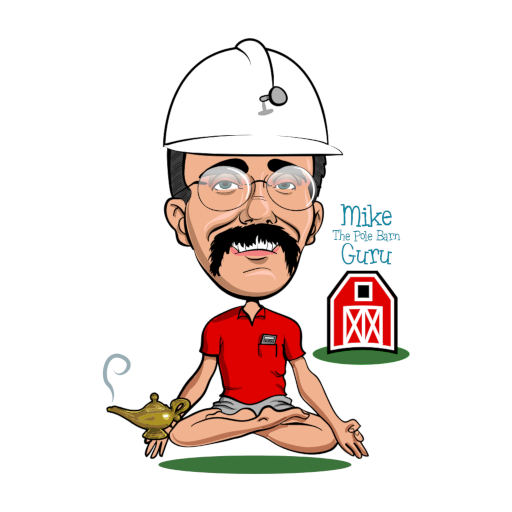The best time to insulate your new pole building…is at the time of construction. There are many building features which are more easily done at time of construction, but sometimes the old pocketbook only stretches so far.
At the very least, if you can prepare your building for future “additions” of features such as additional doors, windows, and insulation, you will be time and money ahead. In the building planning stage, one of the “lists” you might want to make in order to make the best decisions in designing and ordering your new pole barn, is “what are all the possible uses of my building going to be?” I’m talking not just in the next few months, but way down the road, like even five or more years from now.
Many times what starts out as a simple accessory building, becomes so much more. With the recent challenges for folks selling and purchasing properties and homes, I’ve seen a huge surge in clients building their garage/accessory building on a new building site before they even think about building their new home. Whether due to waiting to have the former house and real estate sold, or just not enough cash flow to make it all happen at once, more clients have been opting to insulate their pole buildings and live in them while the rest of their plans come to light.
 With this in mind, designing for insulation is important. On my most recent personal building, for example, knowing I wanted to be comfortable in shirtsleeves in -40 degree weather, (and not pay to heat the outside world), I chose to put in deeper outside walls of my building than were necessary by code, to accept a thicker insulation I also put in fiberglass insulation within the interior walls, as part of the building was “cold storage” separating the warmer areas by interior walls. So let’s talk about fiberglass insulation.
With this in mind, designing for insulation is important. On my most recent personal building, for example, knowing I wanted to be comfortable in shirtsleeves in -40 degree weather, (and not pay to heat the outside world), I chose to put in deeper outside walls of my building than were necessary by code, to accept a thicker insulation I also put in fiberglass insulation within the interior walls, as part of the building was “cold storage” separating the warmer areas by interior walls. So let’s talk about fiberglass insulation.
Fiberglass itself is not some “magic” insulator, it is the dead air trapped in the fiberglass which is doing the work. Smash the air out, and you lose R value.
This is not to say fiberglass insulation, is still not one of the most affordable and best insulation choices. Sometimes it just comes down to two questions: 1. Will it do what I want it to? And 2. Will the cost of the product and installation be a good investment over time?
With proper advance structural planning, roof purlins and wall girts can be spaced at 24 inches on center. This will facilitate the later installation of batt insulation. Properly installed, this method can be effective for maintaining a controlled climate within the building. Installation of kraft (paper faced) fiberglass insulation is relatively quick, as it is manufactured with staple tabs along the sides of the rolls for easy application. Many professional installers prefer to use unfaced insulation and add a clear vinyl visqueen vapor barrier to the inside of the fiberglass/framing assembly. In either case, with a tight seal it is clean, neat and contributes to mold prevention and pest control.
I would be remiss if I didn’t advise you to be safety conscious during installation. Put on protective gloves, a dust mask and goggles when working with insulation. Insulation is made of tiny fiberglass shards, which can cause serious irritation of the skin, eyes, nose and throat if you don’t take proper precautions.
Overall fiberglass insulation batts remain an easy to install option and affordable choice for condensation, climate, mold and pest control.






